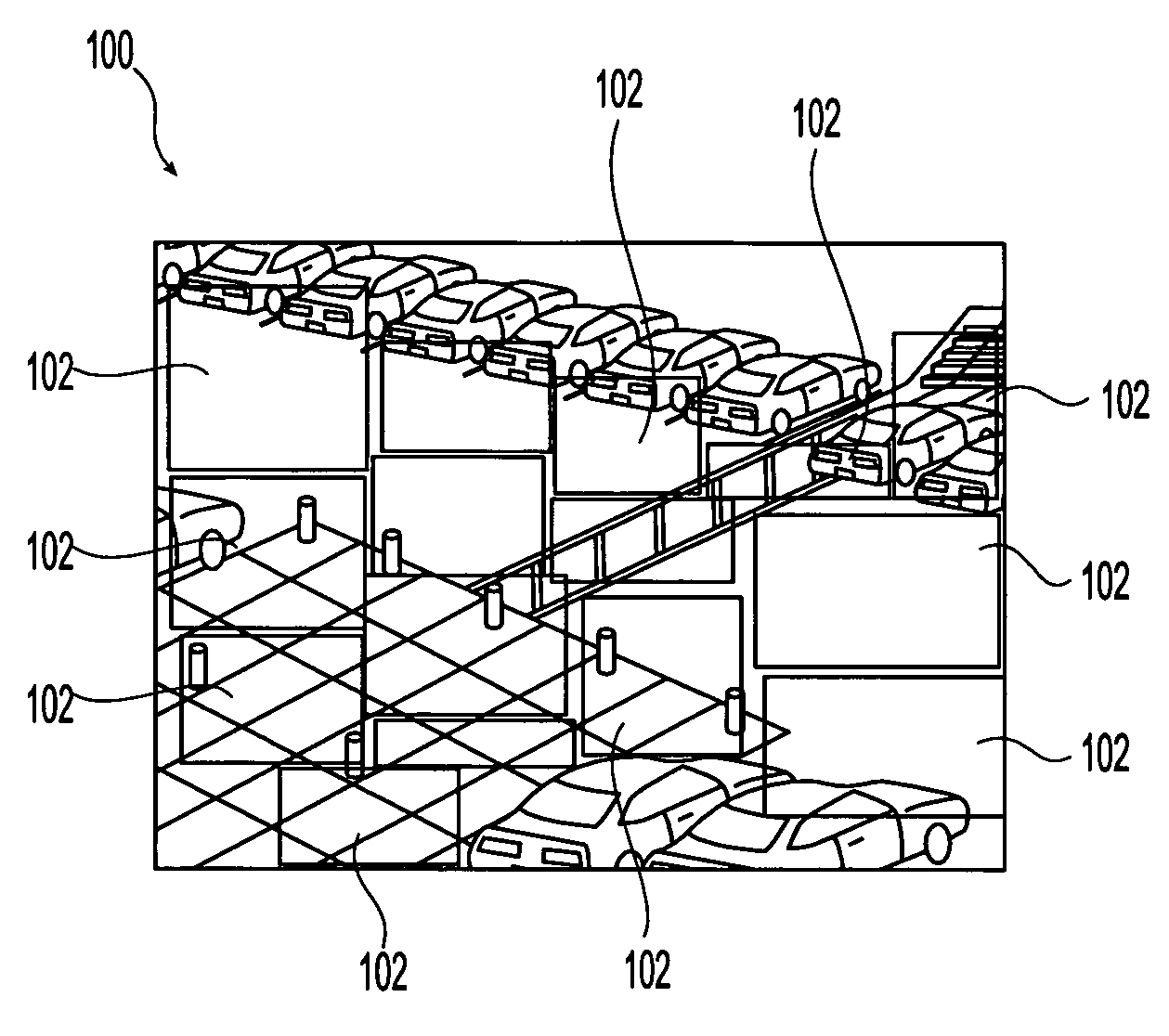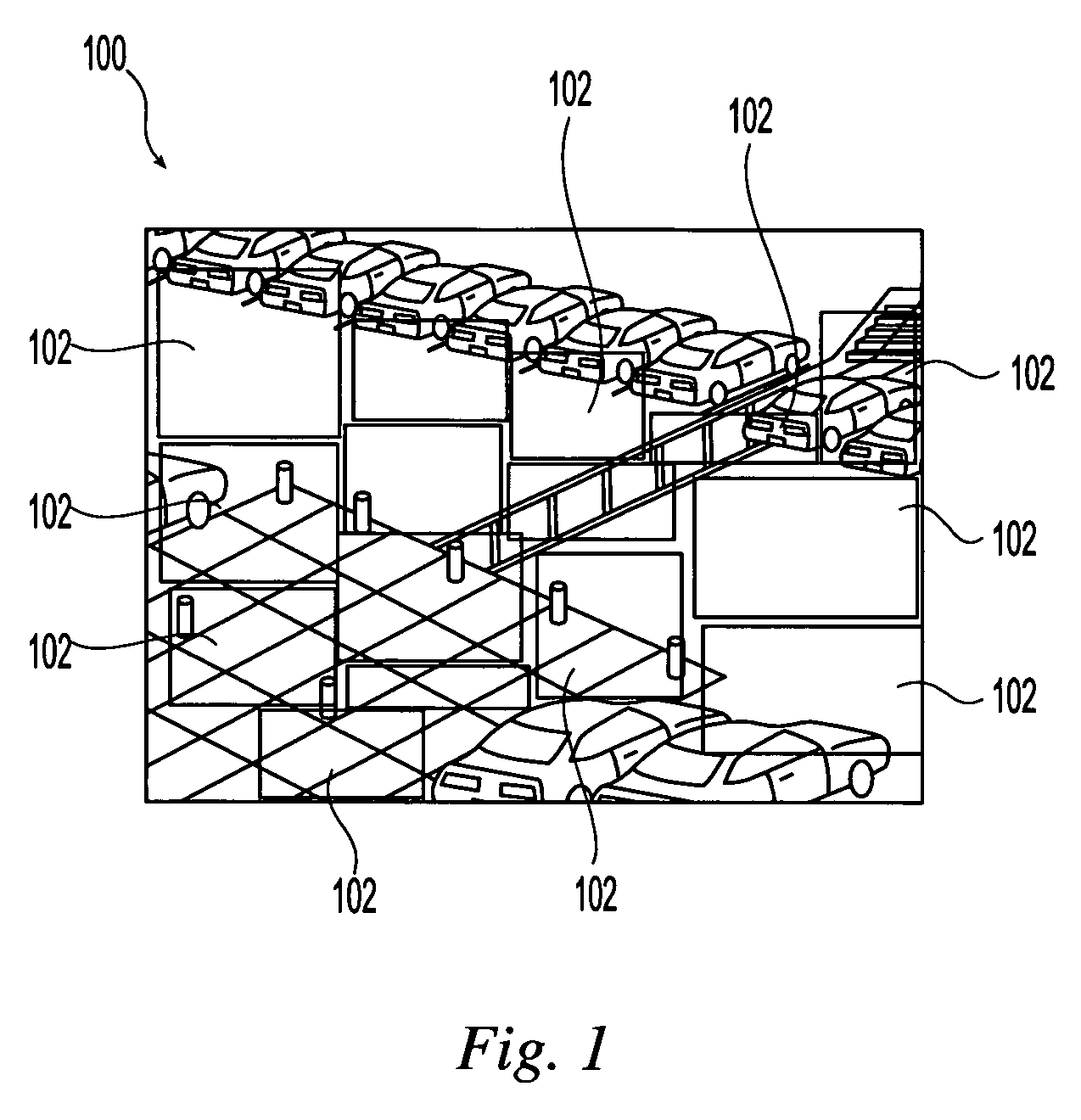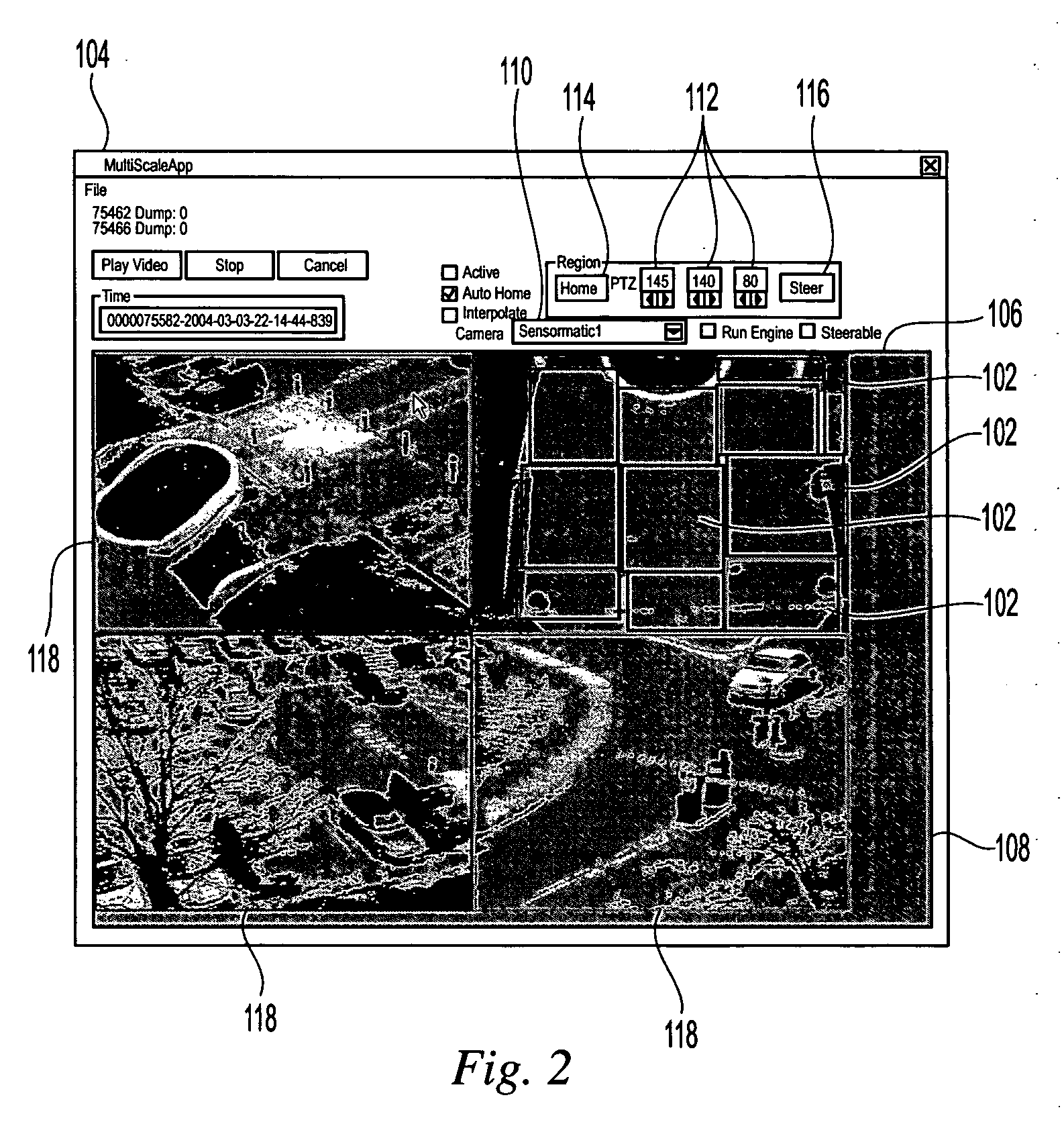Automatic multiscale image acquisition from a steerable camera
a multi-scale image and camera technology, applied in the field of video camera systems, can solve the problems of poor quality of surveillance video, increased chance of events of interest, and limited degree of video surveillance coverage in a given area,
- Summary
- Abstract
- Description
- Claims
- Application Information
AI Technical Summary
Benefits of technology
Problems solved by technology
Method used
Image
Examples
Embodiment Construction
[0023] Image acquisition systems in accordance with exemplary embodiments of the present invention include at least a plurality of video cameras in communication with a control mechanism. Suitable control mechanisms are capable of controlling the operation of each video camera and of retrieving and analyzing video information captured by these video cameras. In one embodiment, the control mechanism includes a logic control device such as a computer, including dedicated computers and general purpose computers. At least one parameter of one of the cameras is controllable by the control mechanism. Controllable parameters include, but they are not limited to, pan, tilt, zoom, focus, speed, aperture and combinations thereof.
[0024] The image acquisition system monitors one or more areas for detection of events of interest. These events of interest include, but are not limited to, the commission of a criminal offense, the occurrence of traffic accidents, the entry of persons into restrict...
PUM
 Login to View More
Login to View More Abstract
Description
Claims
Application Information
 Login to View More
Login to View More - R&D
- Intellectual Property
- Life Sciences
- Materials
- Tech Scout
- Unparalleled Data Quality
- Higher Quality Content
- 60% Fewer Hallucinations
Browse by: Latest US Patents, China's latest patents, Technical Efficacy Thesaurus, Application Domain, Technology Topic, Popular Technical Reports.
© 2025 PatSnap. All rights reserved.Legal|Privacy policy|Modern Slavery Act Transparency Statement|Sitemap|About US| Contact US: help@patsnap.com



